Yi Jin
HQ-CLIP: Leveraging Large Vision-Language Models to Create High-Quality Image-Text Datasets and CLIP Models
Jul 30, 2025Abstract:Large-scale but noisy image-text pair data have paved the way for the success of Contrastive Language-Image Pretraining (CLIP). As the foundation vision encoder, CLIP in turn serves as the cornerstone for most large vision-language models (LVLMs). This interdependence naturally raises an interesting question: Can we reciprocally leverage LVLMs to enhance the quality of image-text pair data, thereby opening the possibility of a self-reinforcing cycle for continuous improvement? In this work, we take a significant step toward this vision by introducing an LVLM-driven data refinement pipeline. Our framework leverages LVLMs to process images and their raw alt-text, generating four complementary textual formulas: long positive descriptions, long negative descriptions, short positive tags, and short negative tags. Applying this pipeline to the curated DFN-Large dataset yields VLM-150M, a refined dataset enriched with multi-grained annotations. Based on this dataset, we further propose a training paradigm that extends conventional contrastive learning by incorporating negative descriptions and short tags as additional supervised signals. The resulting model, namely HQ-CLIP, demonstrates remarkable improvements across diverse benchmarks. Within a comparable training data scale, our approach achieves state-of-the-art performance in zero-shot classification, cross-modal retrieval, and fine-grained visual understanding tasks. In retrieval benchmarks, HQ-CLIP even surpasses standard CLIP models trained on the DFN-2B dataset, which contains 10$\times$ more training data than ours. All code, data, and models are available at https://zxwei.site/hqclip.
ShotBench: Expert-Level Cinematic Understanding in Vision-Language Models
Jun 26, 2025Abstract:Cinematography, the fundamental visual language of film, is essential for conveying narrative, emotion, and aesthetic quality. While recent Vision-Language Models (VLMs) demonstrate strong general visual understanding, their proficiency in comprehending the nuanced cinematic grammar embedded within individual shots remains largely unexplored and lacks robust evaluation. This critical gap limits both fine-grained visual comprehension and the precision of AI-assisted video generation. To address this, we introduce \textbf{ShotBench}, a comprehensive benchmark specifically designed for cinematic language understanding. It features over 3.5k expert-annotated QA pairs from images and video clips, meticulously curated from over 200 acclaimed (predominantly Oscar-nominated) films and spanning eight key cinematography dimensions. Our evaluation of 24 leading VLMs on ShotBench reveals their substantial limitations: even the top-performing model achieves less than 60\% average accuracy, particularly struggling with fine-grained visual cues and complex spatial reasoning. To catalyze advancement in this domain, we construct \textbf{ShotQA}, a large-scale multimodal dataset comprising approximately 70k cinematic QA pairs. Leveraging ShotQA, we develop \textbf{ShotVL} through supervised fine-tuning and Group Relative Policy Optimization. ShotVL significantly outperforms all existing open-source and proprietary models on ShotBench, establishing new \textbf{state-of-the-art} performance. We open-source our models, data, and code to foster rapid progress in this crucial area of AI-driven cinematic understanding and generation.
Reducing CT Metal Artifacts by Learning Latent Space Alignment with Gemstone Spectral Imaging Data
Mar 27, 2025Abstract:Metal artifacts in CT slices have long posed challenges in medical diagnostics. These artifacts degrade image quality, resulting in suboptimal visualization and complicating the accurate interpretation of tissues adjacent to metal implants. To address these issues, we introduce the Latent Gemstone Spectral Imaging (GSI) Alignment Framework, which effectively reduces metal artifacts while avoiding the introduction of noise information. Our work is based on a key finding that even artifact-affected ordinary CT sequences contain sufficient information to discern detailed structures. The challenge lies in the inability to clearly represent this information. To address this issue, we developed an Alignment Framework that adjusts the representation of ordinary CT images to match GSI CT sequences. GSI is an advanced imaging technique using multiple energy levels to mitigate artifacts caused by metal implants. By aligning the representation to GSI data, we can effectively suppress metal artifacts while clearly revealing detailed structure, without introducing extraneous information into CT sequences. To facilitate the application, we propose a new dataset, Artifacts-GSI, captured from real patients with metal implants, and establish a new benchmark based on this dataset. Experimental results show that our method significantly reduces metal artifacts and greatly enhances the readability of CT slices. All our code and data are available at: https://um-lab.github.io/GSI-MAR/
CLIP-driven Dual Feature Enhancing Network for Gaze Estimation
Feb 27, 2025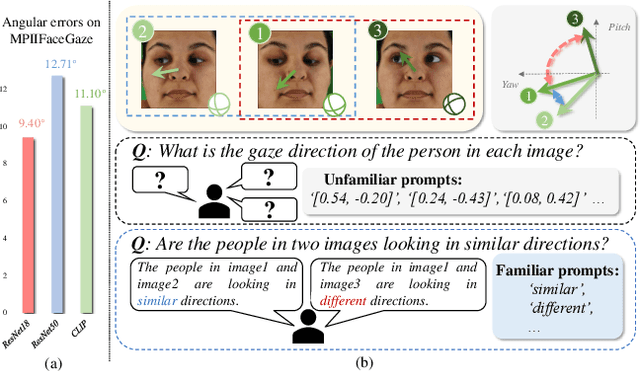
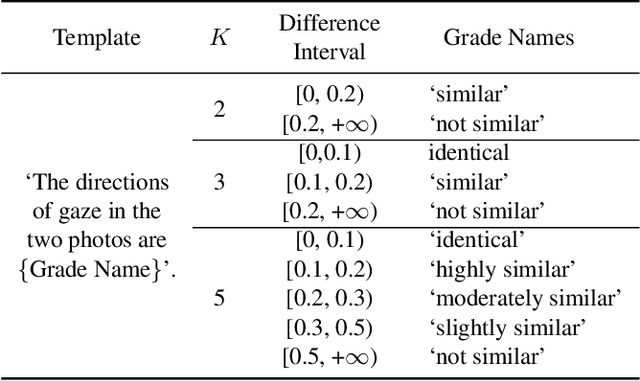
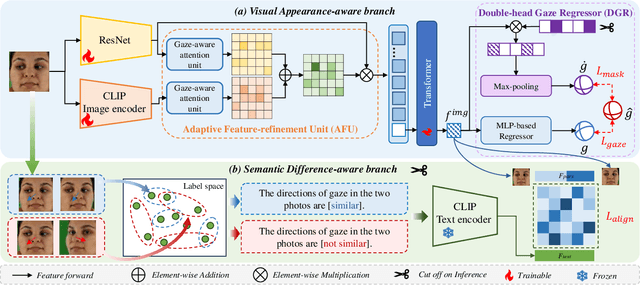
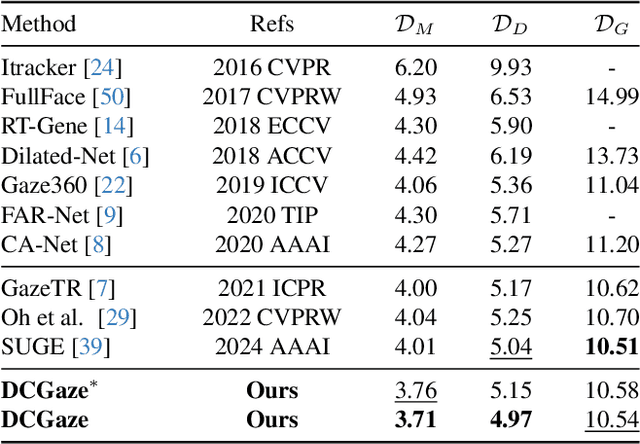
Abstract:The complex application scenarios have raised critical requirements for precise and generalizable gaze estimation methods. Recently, the pre-trained CLIP has achieved remarkable performance on various vision tasks, but its potentials have not been fully exploited in gaze estimation. In this paper, we propose a novel CLIP-driven Dual Feature Enhancing Network (CLIP-DFENet), which boosts gaze estimation performance with the help of CLIP under a novel `main-side' collaborative enhancing strategy. Accordingly, a Language-driven Differential Module (LDM) is designed on the basis of the CLIP's text encoder to reveal the semantic difference of gaze. This module could empower our Core Feature Extractor with the capability of characterizing the gaze-related semantic information. Moreover, a Vision-driven Fusion Module (VFM) is introduced to strengthen the generalized and valuable components of visual embeddings obtained via CLIP's image encoder, and utilizes them to further improve the generalization of the features captured by Core Feature Extractor. Finally, a robust Double-head Gaze Regressor is adopted to map the enhanced features to gaze directions. Extensive experimental results on four challenging datasets over within-domain and cross-domain tasks demonstrate the discriminability and generalizability of our CLIP-DFENet.
Integral Fast Fourier Color Constancy
Feb 05, 2025Abstract:Traditional auto white balance (AWB) algorithms typically assume a single global illuminant source, which leads to color distortions in multi-illuminant scenes. While recent neural network-based methods have shown excellent accuracy in such scenarios, their high parameter count and computational demands limit their practicality for real-time video applications. The Fast Fourier Color Constancy (FFCC) algorithm was proposed for single-illuminant-source scenes, predicting a global illuminant source with high efficiency. However, it cannot be directly applied to multi-illuminant scenarios unless specifically modified. To address this, we propose Integral Fast Fourier Color Constancy (IFFCC), an extension of FFCC tailored for multi-illuminant scenes. IFFCC leverages the proposed integral UV histogram to accelerate histogram computations across all possible regions in Cartesian space and parallelizes Fourier-based convolution operations, resulting in a spatially-smooth illumination map. This approach enables high-accuracy, real-time AWB in multi-illuminant scenes. Extensive experiments show that IFFCC achieves accuracy that is on par with or surpasses that of pixel-level neural networks, while reducing the parameter count by over $400\times$ and processing speed by 20 - $100\times$ faster than network-based approaches.
GrassNet: State Space Model Meets Graph Neural Network
Aug 16, 2024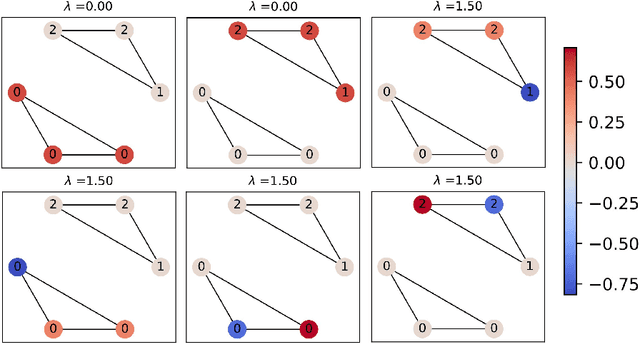


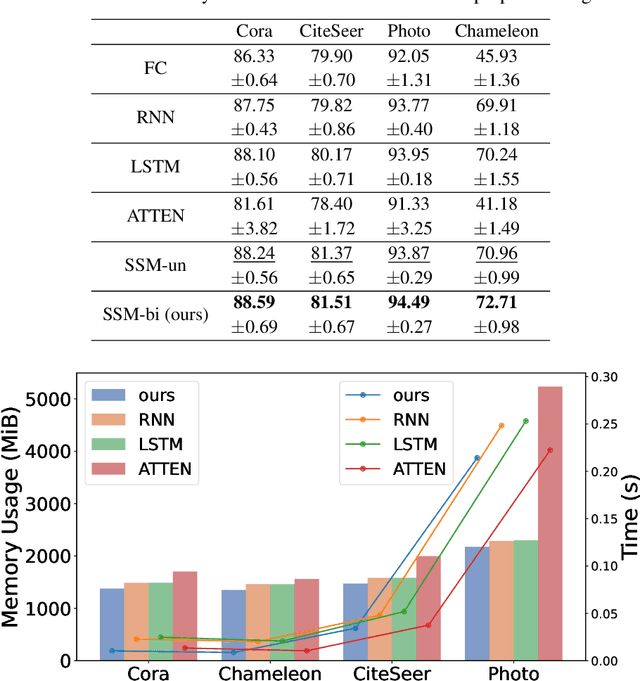
Abstract:Designing spectral convolutional networks is a formidable task in graph learning. In traditional spectral graph neural networks (GNNs), polynomial-based methods are commonly used to design filters via the Laplacian matrix. In practical applications, however, these polynomial methods encounter inherent limitations, which primarily arise from the the low-order truncation of polynomial filters and the lack of overall modeling of the graph spectrum. This leads to poor performance of existing spectral approaches on real-world graph data, especially when the spectrum is highly concentrated or contains many numerically identical values, as they tend to apply the exact same modulation to signals with the same frequencies. To overcome these issues, in this paper, we propose Graph State Space Network (GrassNet), a novel graph neural network with theoretical support that provides a simple yet effective scheme for designing and learning arbitrary graph spectral filters. In particular, our GrassNet introduces structured state space models (SSMs) to model the correlations of graph signals at different frequencies and derives a unique rectification for each frequency in the graph spectrum. To the best of our knowledge, our work is the first to employ SSMs for the design of GNN spectral filters, and it theoretically offers greater expressive power compared with polynomial filters. Extensive experiments on nine public benchmarks reveal that GrassNet achieves superior performance in real-world graph modeling tasks.
Single Image Dehazing Using Scene Depth Ordering
Aug 11, 2024



Abstract:Images captured in hazy weather generally suffer from quality degradation, and many dehazing methods have been developed to solve this problem. However, single image dehazing problem is still challenging due to its ill-posed nature. In this paper, we propose a depth order guided single image dehazing method, which utilizes depth order in hazy images to guide the dehazing process to achieve a similar depth perception in corresponding dehazing results. The consistency of depth perception ensures that the regions that look farther or closer in hazy images also appear farther or closer in the corresponding dehazing results, and thus effectively avoid the undesired visual effects. To achieve this goal, a simple yet effective strategy is proposed to extract the depth order in hazy images, which offers a reference for depth perception in hazy weather. Additionally, a depth order embedded transformation model is devised, which performs transmission estimation under the guidance of depth order to realize an unchanged depth order in the dehazing results. The extracted depth order provides a powerful global constraint for the dehazing process, which contributes to the efficient utilization of global information, thereby bringing an overall improvement in restoration quality. Extensive experiments demonstrate that the proposed method can better recover potential structure and vivid color with higher computational efficiency than the state-of-the-art dehazing methods.
STAR: Scale-wise Text-to-image generation via Auto-Regressive representations
Jun 16, 2024
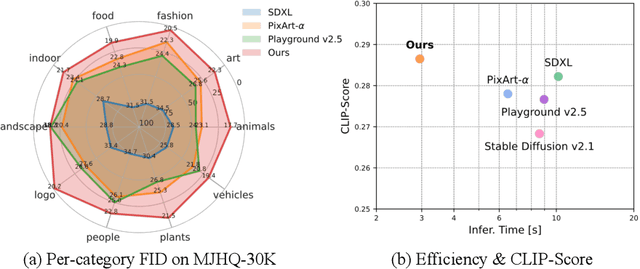
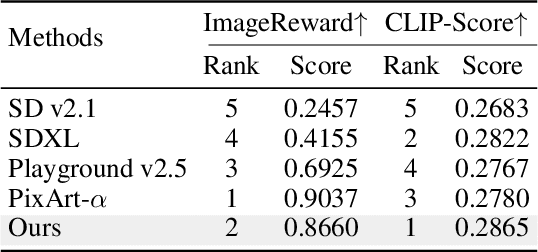
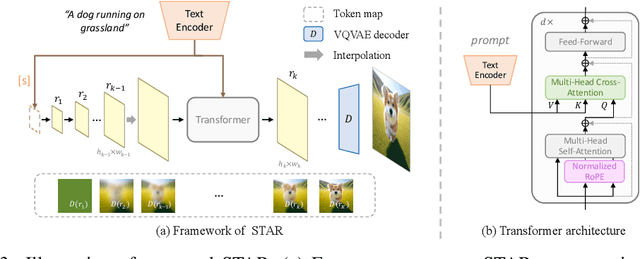
Abstract:We present STAR, a text-to-image model that employs scale-wise auto-regressive paradigm. Unlike VAR, which is limited to class-conditioned synthesis within a fixed set of predetermined categories, our STAR enables text-driven open-set generation through three key designs: To boost diversity and generalizability with unseen combinations of objects and concepts, we introduce a pre-trained text encoder to extract representations for textual constraints, which we then use as guidance. To improve the interactions between generated images and fine-grained textual guidance, making results more controllable, additional cross-attention layers are incorporated at each scale. Given the natural structure correlation across different scales, we leverage 2D Rotary Positional Encoding (RoPE) and tweak it into a normalized version. This ensures consistent interpretation of relative positions across token maps at different scales and stabilizes the training process. Extensive experiments demonstrate that STAR surpasses existing benchmarks in terms of fidelity,image text consistency, and aesthetic quality. Our findings emphasize the potential of auto-regressive methods in the field of high-quality image synthesis, offering promising new directions for the T2I field currently dominated by diffusion methods.
MotionClone: Training-Free Motion Cloning for Controllable Video Generation
Jun 12, 2024Abstract:Motion-based controllable text-to-video generation involves motions to control the video generation. Previous methods typically require the training of models to encode motion cues or the fine-tuning of video diffusion models. However, these approaches often result in suboptimal motion generation when applied outside the trained domain. In this work, we propose MotionClone, a training-free framework that enables motion cloning from a reference video to control text-to-video generation. We employ temporal attention in video inversion to represent the motions in the reference video and introduce primary temporal-attention guidance to mitigate the influence of noisy or very subtle motions within the attention weights. Furthermore, to assist the generation model in synthesizing reasonable spatial relationships and enhance its prompt-following capability, we propose a location-aware semantic guidance mechanism that leverages the coarse location of the foreground from the reference video and original classifier-free guidance features to guide the video generation. Extensive experiments demonstrate that MotionClone exhibits proficiency in both global camera motion and local object motion, with notable superiority in terms of motion fidelity, textual alignment, and temporal consistency.
DFA-GNN: Forward Learning of Graph Neural Networks by Direct Feedback Alignment
Jun 04, 2024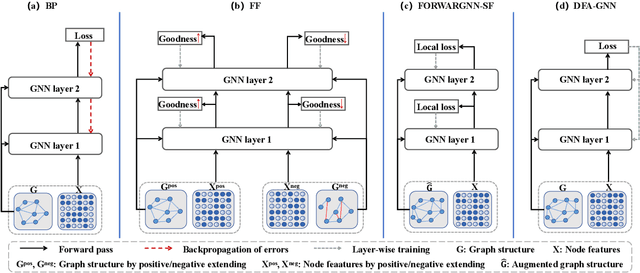
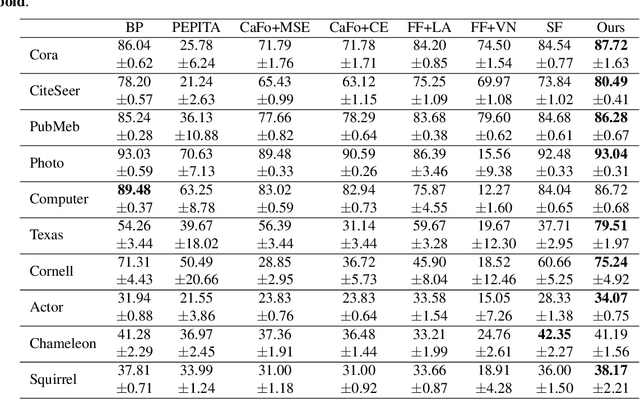

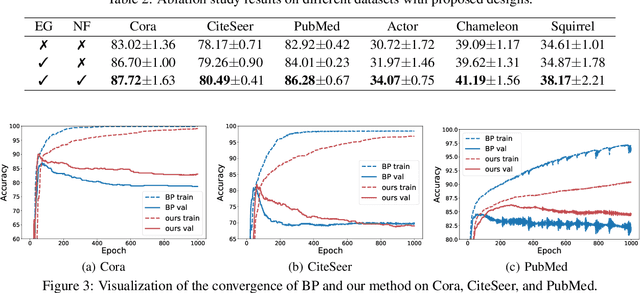
Abstract:Graph neural networks are recognized for their strong performance across various applications, with the backpropagation algorithm playing a central role in the development of most GNN models. However, despite its effectiveness, BP has limitations that challenge its biological plausibility and affect the efficiency, scalability and parallelism of training neural networks for graph-based tasks. While several non-BP training algorithms, such as the direct feedback alignment, have been successfully applied to fully-connected and convolutional network components for handling Euclidean data, directly adapting these non-BP frameworks to manage non-Euclidean graph data in GNN models presents significant challenges. These challenges primarily arise from the violation of the i.i.d. assumption in graph data and the difficulty in accessing prediction errors for all samples (nodes) within the graph. To overcome these obstacles, in this paper we propose DFA-GNN, a novel forward learning framework tailored for GNNs with a case study of semi-supervised learning. The proposed method breaks the limitations of BP by using a dedicated forward training mechanism. Specifically, DFA-GNN extends the principles of DFA to adapt to graph data and unique architecture of GNNs, which incorporates the information of graph topology into the feedback links to accommodate the non-Euclidean characteristics of graph data. Additionally, for semi-supervised graph learning tasks, we developed a pseudo error generator that spreads residual errors from training data to create a pseudo error for each unlabeled node. These pseudo errors are then utilized to train GNNs using DFA. Extensive experiments on 10 public benchmarks reveal that our learning framework outperforms not only previous non-BP methods but also the standard BP methods, and it exhibits excellent robustness against various types of noise and attacks.
 Add to Chrome
Add to Chrome Add to Firefox
Add to Firefox Add to Edge
Add to Edge